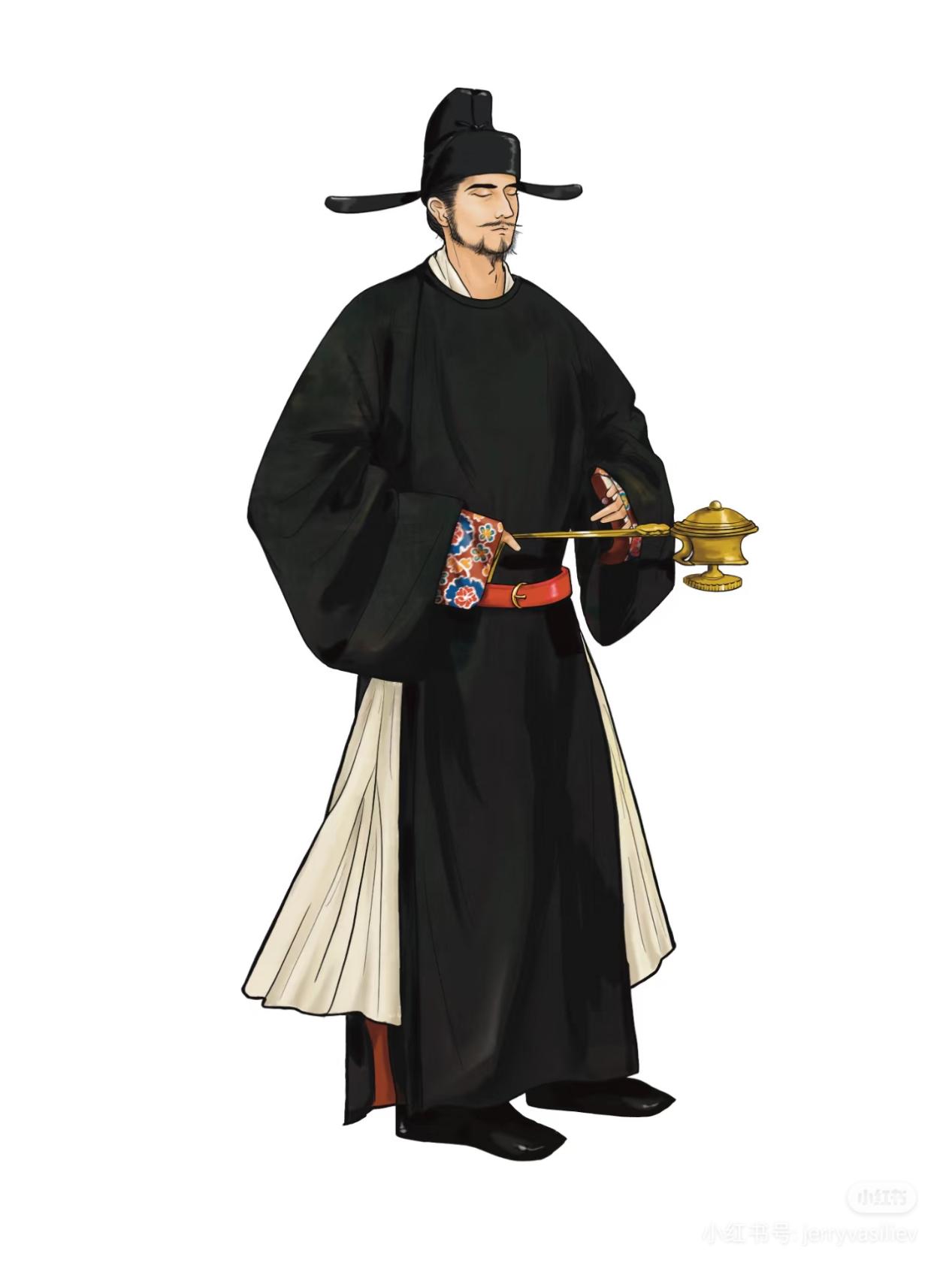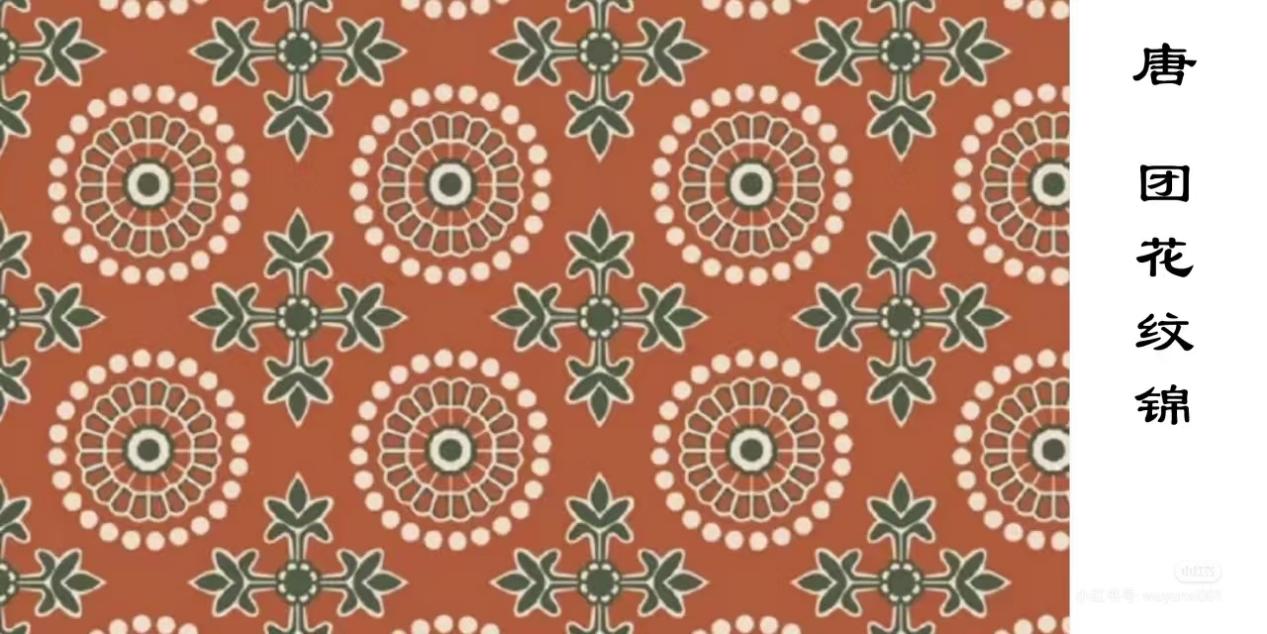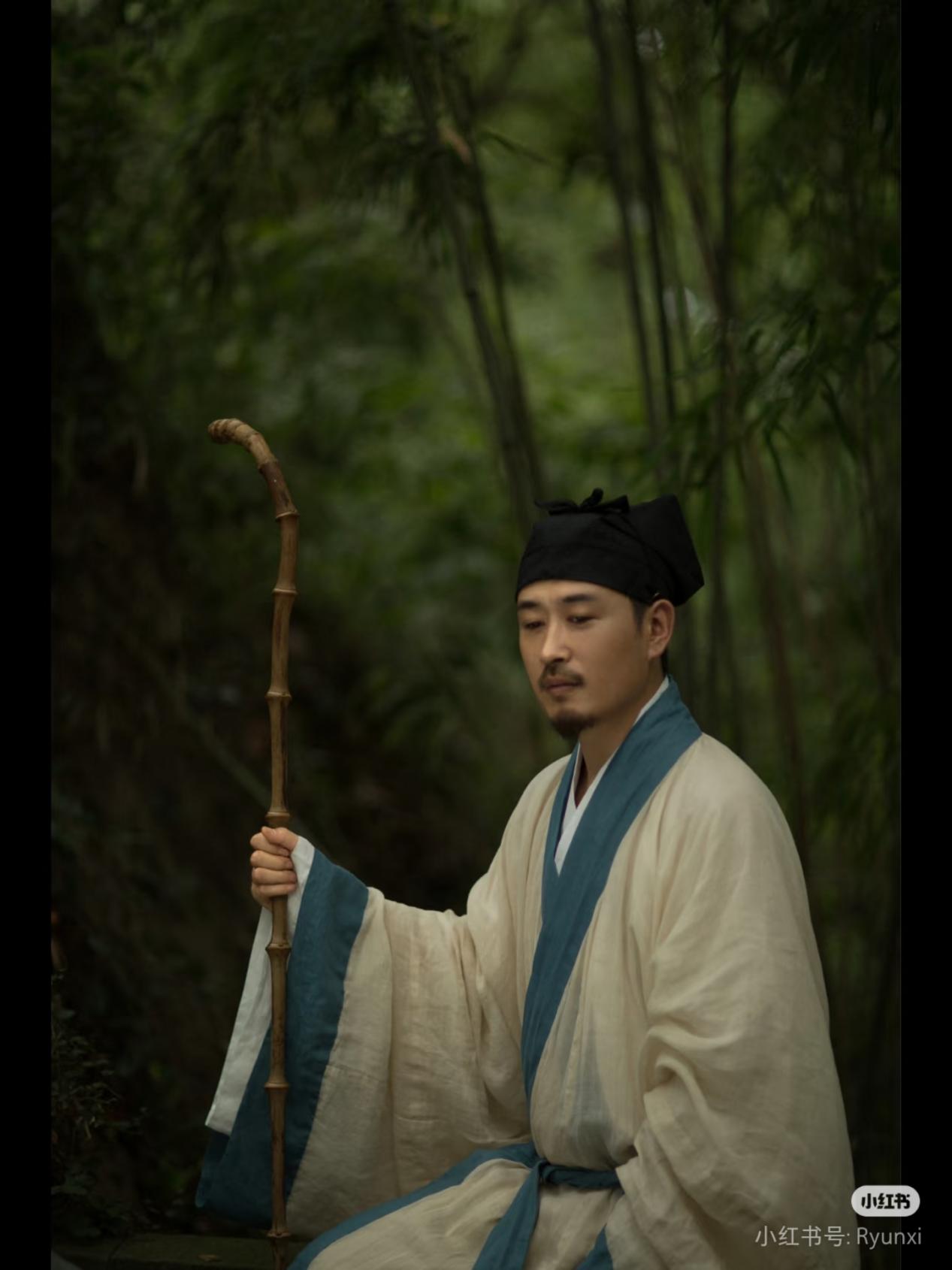A friend of mine asked me to send these reference examples.
1: This section provides some information on Chinese clothing during the game's time period, including that of semi-Sinicized states such as Liao, Jin, Western Xia, and Dali, in response to the log's call. The game's timeframe was a period of significant transformation in Chinese attire—clothing in 867, 1066, and 1178 underwent major changes. However, amid these drastic shifts, some elements remained constant. Garments essential for Confucian rituals had established regulations as early as the Han Dynasty and saw little variation even by the Ming Dynasty. The changes primarily affected changfu (everyday clothing).
For example, in the Ming Dynasty's ceremonial clothing system, types 1-4 were Confucian ritual garments that remained largely unchanged across dynasties. The following will focus on introducing the 1mianfu, 3tongtianguanfu, and 5changfu of the Tang and Song eras.


2: First, regarding mianfu (ceremonial robes), while significant variations existed between Tang and Song dynasties in-game, we've adopted the 1112 Zhenghe era clothing regulations from the Song dynasty as our reference standard due to better historical documentation. In Crusader Kings terms, mianfu were primarily worn for coronations (upcoming expansion), funerals, pilgrimages (during sacrificial rites), and royal weddings (by the principal, not guests). It's worth noting that mianfu represented the highest ceremonial attire in Confucian ritual hierarchy, though current promotional materials suggest Paradox has prioritized tongtianguanfu over mianfu. The development history of Tang-Song/Liao-Jin-Yuan mianfu shows Tang emperors wore pure black mianfu - a tradition inherited by Liao, while Song modified them to blue, a style subsequently adopted by Jin and then Yuan. Despite these changes, Confucian ritual garments maintained remarkable consistency across eras. For production purposes, I recommend using Song-style mianfu as the base, though this explanation serves to highlight the garment's historical evolution.

3: The imperial-grade mianfu of the Song Dynasty

This image is quite important, so I've attached the high-resolution original. For reference purposes.View attachment 微信图片_20250530123501.jpg

4: During the Tang and Song dynasties, all officials were entitled to wear mianfu (ceremonial robes) according to their respective ranks, as illustrated. While creating mianfu for every rank may be unnecessary, it is absolutely essential to design them for first-rank princes/kings (emperor's sons) and second-rank princes (emperor's grandsons/sons of first-rank princes), as these high-ranking imperial family members would necessarily participate in coronation ceremonies (even as non-ruling members), grand weddings, and important sacrificial rites. It's crucial to note that in the Chinese ranking system, a lower numerical rank indicates higher status - rank 1 represents the highest position (such as top ministers and imperial princes) while rank 9 denotes the lowest (minor officials), which is the inverse of typical merit-based numbering systems. All subsequent references to official ranks will follow this Chinese convention where smaller numbers correspond to higher status. The visual materials clearly demonstrate how these ceremonial robes evolved across dynasties while maintaining their core ritual significance. For practical implementation purposes, focusing on the first two princely ranks would sufficiently cover the most historically significant and frequently occurring ceremonial occasions involving mianfu within the game's context.


5:You may observe the hierarchical logic within Confucian ceremonial attire - rank distinction is primarily determined by the quantity of ornaments and the number of liu (pendant strings on the imperial crown). The emperor wears 12 liu, first-rank princes 9 liu, and second-rank princes 7 liu.)
.jpg)
6: I'm pleased to see tongtianguanfu featured as imperial attire in the dev logs, but it's important to clarify its actual protocol status. Tongtianguanfu represents relatively lower ceremonial rank and would be used for in-game situations like: receiving ministers (such as provincial governors reporting to the capital) and appointment ceremonies. While it's appropriate to depict the emperor wearing tongtianguanfu in court interface scenes, mianfu remains the mandatory attire for all major state rituals.
More crucially, conquest dynasties like the Yuan exclusively used mianfu while completely abandoning tongtianguanfu - this historical fact makes prioritized mianfu modeling even more essential.




1: This section provides some information on Chinese clothing during the game's time period, including that of semi-Sinicized states such as Liao, Jin, Western Xia, and Dali, in response to the log's call. The game's timeframe was a period of significant transformation in Chinese attire—clothing in 867, 1066, and 1178 underwent major changes. However, amid these drastic shifts, some elements remained constant. Garments essential for Confucian rituals had established regulations as early as the Han Dynasty and saw little variation even by the Ming Dynasty. The changes primarily affected changfu (everyday clothing).
For example, in the Ming Dynasty's ceremonial clothing system, types 1-4 were Confucian ritual garments that remained largely unchanged across dynasties. The following will focus on introducing the 1mianfu, 3tongtianguanfu, and 5changfu of the Tang and Song eras.


2: First, regarding mianfu (ceremonial robes), while significant variations existed between Tang and Song dynasties in-game, we've adopted the 1112 Zhenghe era clothing regulations from the Song dynasty as our reference standard due to better historical documentation. In Crusader Kings terms, mianfu were primarily worn for coronations (upcoming expansion), funerals, pilgrimages (during sacrificial rites), and royal weddings (by the principal, not guests). It's worth noting that mianfu represented the highest ceremonial attire in Confucian ritual hierarchy, though current promotional materials suggest Paradox has prioritized tongtianguanfu over mianfu. The development history of Tang-Song/Liao-Jin-Yuan mianfu shows Tang emperors wore pure black mianfu - a tradition inherited by Liao, while Song modified them to blue, a style subsequently adopted by Jin and then Yuan. Despite these changes, Confucian ritual garments maintained remarkable consistency across eras. For production purposes, I recommend using Song-style mianfu as the base, though this explanation serves to highlight the garment's historical evolution.

3: The imperial-grade mianfu of the Song Dynasty

This image is quite important, so I've attached the high-resolution original. For reference purposes.View attachment 微信图片_20250530123501.jpg

4: During the Tang and Song dynasties, all officials were entitled to wear mianfu (ceremonial robes) according to their respective ranks, as illustrated. While creating mianfu for every rank may be unnecessary, it is absolutely essential to design them for first-rank princes/kings (emperor's sons) and second-rank princes (emperor's grandsons/sons of first-rank princes), as these high-ranking imperial family members would necessarily participate in coronation ceremonies (even as non-ruling members), grand weddings, and important sacrificial rites. It's crucial to note that in the Chinese ranking system, a lower numerical rank indicates higher status - rank 1 represents the highest position (such as top ministers and imperial princes) while rank 9 denotes the lowest (minor officials), which is the inverse of typical merit-based numbering systems. All subsequent references to official ranks will follow this Chinese convention where smaller numbers correspond to higher status. The visual materials clearly demonstrate how these ceremonial robes evolved across dynasties while maintaining their core ritual significance. For practical implementation purposes, focusing on the first two princely ranks would sufficiently cover the most historically significant and frequently occurring ceremonial occasions involving mianfu within the game's context.


5:You may observe the hierarchical logic within Confucian ceremonial attire - rank distinction is primarily determined by the quantity of ornaments and the number of liu (pendant strings on the imperial crown). The emperor wears 12 liu, first-rank princes 9 liu, and second-rank princes 7 liu.)
.jpg)
6: I'm pleased to see tongtianguanfu featured as imperial attire in the dev logs, but it's important to clarify its actual protocol status. Tongtianguanfu represents relatively lower ceremonial rank and would be used for in-game situations like: receiving ministers (such as provincial governors reporting to the capital) and appointment ceremonies. While it's appropriate to depict the emperor wearing tongtianguanfu in court interface scenes, mianfu remains the mandatory attire for all major state rituals.
More crucially, conquest dynasties like the Yuan exclusively used mianfu while completely abandoning tongtianguanfu - this historical fact makes prioritized mianfu modeling even more essential.




Last edited:
- 4
- 4
- 2













































































































